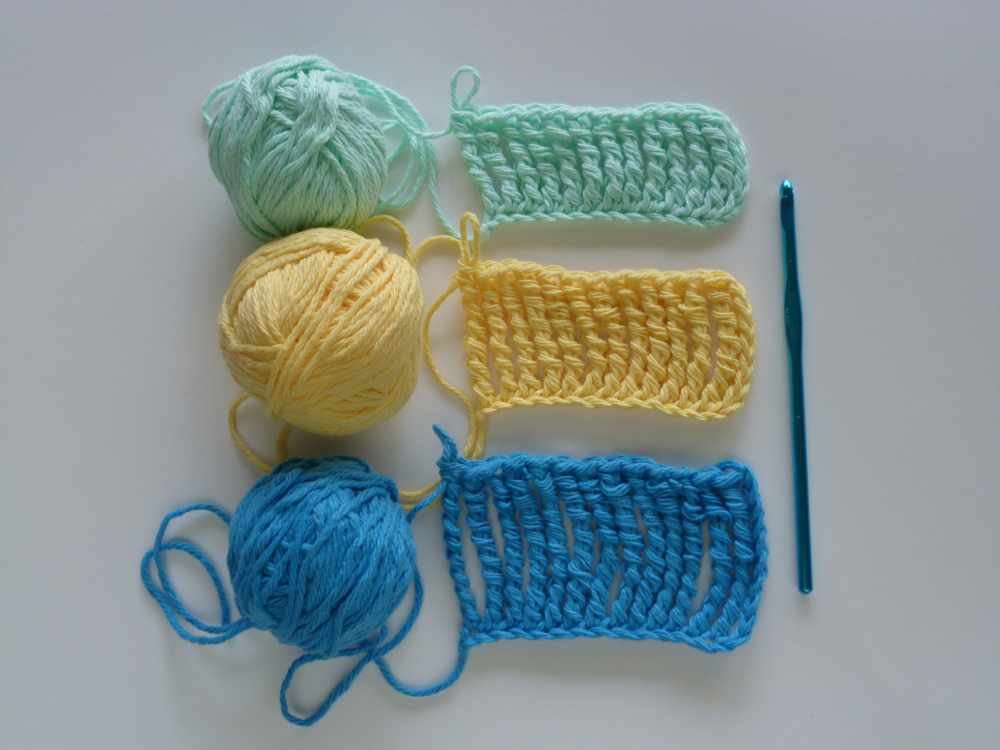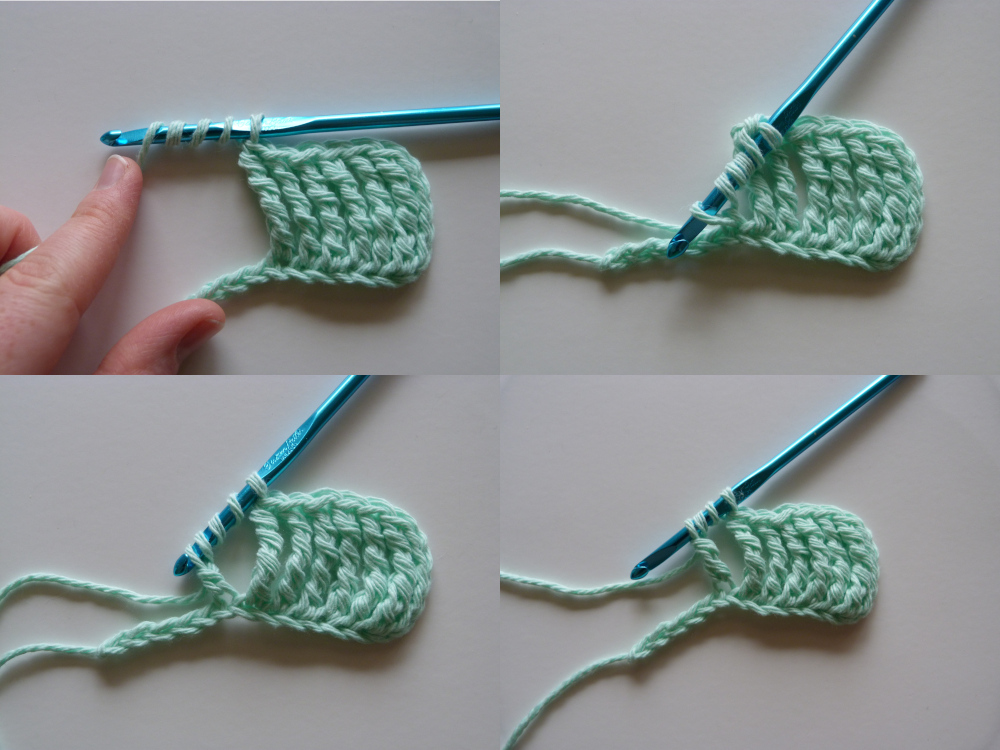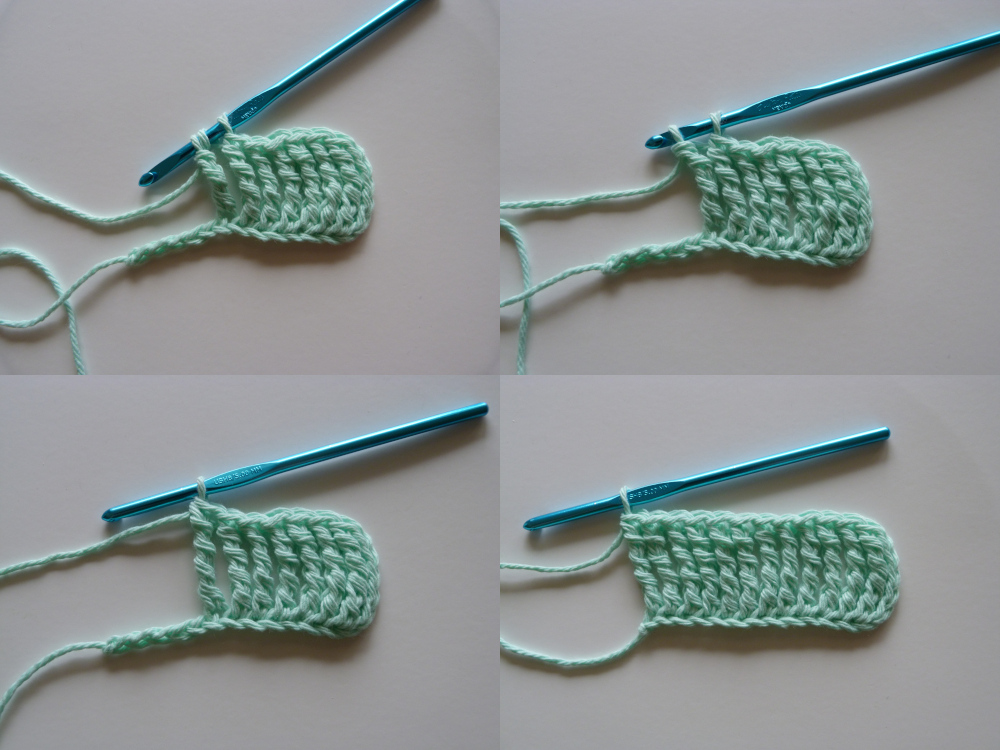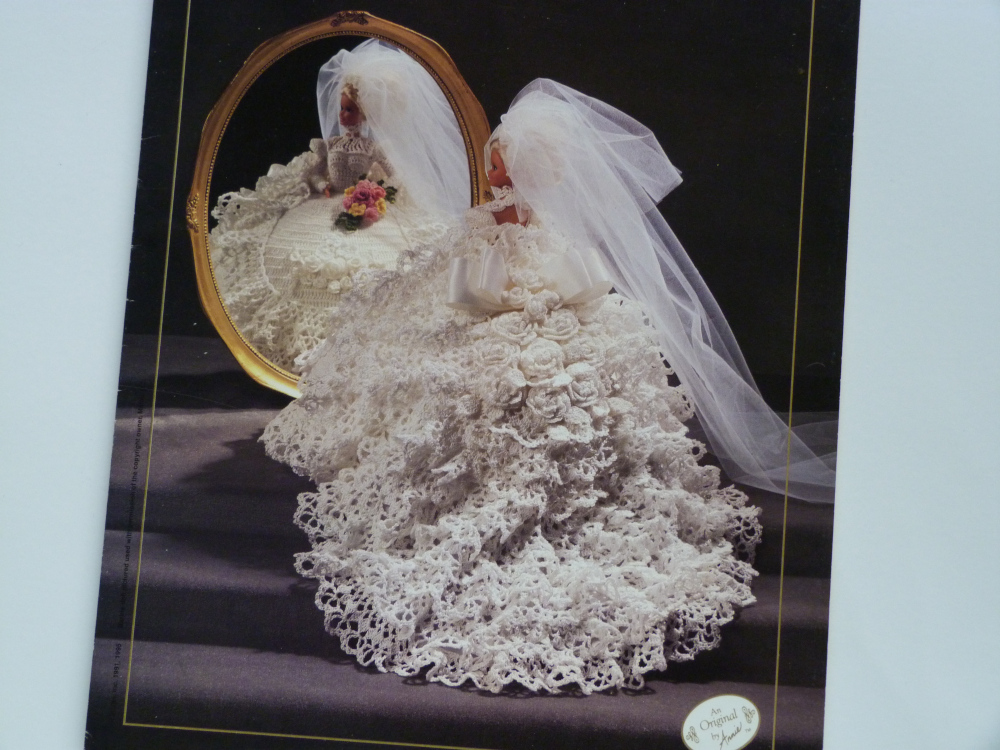How to Crochet Tall Stitches
By Amy Yarbrough – 14 Comments
Are you familiar with tall stitches in crochet? You know, the ones that seem to have no name past treble crochet (tr)? When I was learning to crochet I fiddled around with the lengths of crochet stitches but never actually used them in a pattern.
Recently I realized even after all this time I still hadn’t crocheted much with tall stitches. I thought it was about time I delved into that area of crochet to find out more about it.
Do you have any questions about crocheting tall stitches? Keep reading to find out!
What are Tall Stitches?
Technically, I don’t think there is an official definition for tall stitches in crochet. However, it does imply above average crochet stitch lengths. For some they may be those without definable names. For others they may be stitches taller than double or treble crochet.
The main point is, they do have names and it’s not terribly complicated to figure them out. And what’s more, there is only one basic method for making all of them.
How to Crochet Tall Stitches
Basically the number of yarn overs you make will predict the length of your stitch. You yarn over once for a double crochet and twice for a treble (or triple) crochet. Yarn over three times for a double treble crochet and four times for a triple treble crochet. As you do with double crochet and treble crochet, simply yarn over and work through two loop intervals until you no longer have any loops on the hook. Do you see the pattern? No matter how tall you choose to make a stitch, this basic method of yarning over so many times to start and working off two loops at a time is all you need to know.
Here are a couple of collages of the triple treble crochet stitch to show you what I mean. Follow this same pattern for each and every tall stitch.


But what do you call them once you’ve made them?
What to call them?
Let’s assume for this post that tall stitches are those after double crochet. Here is a list of their names and how many yarn overs they require. You may or may not be acquainted with the first few.
Treble (or triple) crochet – 2 yarn overs
Double treble crochet – 3 yarn overs
Triple treble crochet – 4 yarn overs
Quadruple treble crochet – 5 yarn overs
Quintuple treble crochet – 6 yarn overs
Sextuple treble crochet – 7 yarn overs
Septuple treble crochet – 8 yarn overs
Octuple treble crochet – 9 yarn overs
Nonuple treble crochet – 10 yarn overs
Decuple treble crochet – 11 yarn overs
— Avoid Saggy Stitches
There is one thing to take note of: the taller the stitch the harder it is to keep it looking neat. For example, in the first picture above the darkest blue swatch which consists of septuple treble crochets became hard to handle and unruly very easily. If you work them too loose then by the time you are making that last yarn over and pull through you will have a very saggy stitch. My best recommendation is to work the loops close together and not let a lot of space between them.
Tip: I hold my hook with a pencil hold but I have found that using a knife hold for taller stitches better gaurantees a neater stitch.
You can refer to the list above or figure it out for yourself with this handy formula.
— Finding the Name/Number of Yarn Overs
Notice the name of the stitch in direct relation to the number of yarn overs. A great reminder for recalling the number of yarn overs per stitch is by simply adding one to the name of the stitch. For example, if you have chosen a triple treble crochet stitch you can add one so that triple would be quadruple, or translated to 4, meaning yarn over 4 times.
Formula for finding the number of yarn overs:
Name of stitch + 1= # of yarn overs
This works in reverse as well. If you have crocheted a stitch with 8 yarn overs and are trying to figure out what it’s called, simply subtract one from the yarn overs and figure out its latin name (in this case, Septuple).
Formula for finding the name of the stitch:
# of yarn overs – 1= name of stitch
With this method you can figure out both the name and the number of yarn overs for stitches as long as you can make. Although I tend to need a lesson in latin numbers before advancing beyond decuple (10).

What are they used for?
These stitches are not very well known today because most modern crochet patterns do not use them. This begs the question, when are they used then?
Perhaps the most I have seen these taller stitches used would be in patterns with crochet thread. Such as Irish Crochet Lace, crocheted Antebellum Dolls, and crocheted Doilies.
Of course, there are other ways to use these unique stitches, such as lacy crochet stitch patterns for breezy sweaters, delicate wraps, scarves, and you name it.
Ready to give it a go?
Truly there is no end to what you can make with tall stitches. Be inventive and give it a go! One thing I’ve noticed, no matter how much you know about crochet, there is still more to learn.
Have you enjoyed this post? Be sure to share your thoughts in the comments below!


I used really tall stitches (I think I yo’ed 12 times? ) to blow up a fillet mesh and make a net for my indoor passionfruit vine. https://www.instagram.com/p/BcryNdmnj0W/
How clever, Christine! Thanks for sharing!
Looking forward to seeing a pattern , I think I will might try coming up with a shawl creation . Mmmmmmm
What a wonderful idea, Daisy! I’d love to see what you come up with.
I collect “Barbies†I would love the to make the dress above. Where can I get the pattern? I also make at lest 2 scrubbies before going to sleep, and Tall Stitch’s would be nice to use. Pattern ideas anyone ? Happy Every Day We can still crochet !
Hello Debby,
The pattern is impressive, isn’t it? It’s an old one from Annie’s Attic (now Annie’s Catalog) called Annie’s Bridedoll Gown. As far as I can see you can’t buy them now from Annie’s but if you did an internet search you could possibly find a copy someone else is selling. I saw one specifically on Ebay for $3.97.
Using tall stitches for your scrubbies sounds like a great idea. And I love your commitment to crochet every night! Perhaps soon I’ll have some patterns that make use of tall stitches.
Hope this helps!
Amy
Sounds very interesting. Thank your for sharing that. So when you turn to work the next row, how many chains do you make? The same amount for the stitch or one less?
Hello Linda,
Perhaps I should have added a note about that. My method so far is to make a guess based on the length of the stitch and try it. But I think a good idea would be take the number of yarn overs for the stitch and add one or two for the turning chain length. Let me know how this works for you!
Best wishes,
Amy
I just wanted to remind you that a dense fabric can be created with the tall stitches by making them as linked stitches. ie: after completing the first stitch your yo’s are made by pulling through the post of the first stitch until you reach the foundation which is where you yo into the next stitch. I hope this explanation is clear. Your tall stitches never sag that way and a dense fabric is achieved. Maybe you were going to talk about this another time, if so, excuse me for butting in. lol
Mary
Hello Mary,
Thank you for sharing. I had not thought about it but that would be a great solution for spriggly stitches. I will look into it further!
Best wishes,
Amy
Are these the same stitches that are called long stitches in some patterns? Thank you for your in depth explanation on the tall stitches. I can’t wait to give it a try.
Hello Nancy,
Thanks for giving my post a read! Tall stitches and long stitches are different. Long stitches usually refer to stitches that are worked in a stitch a few rows down, such as spikes, while tall stitches are worked in the same row as the rest only made taller by the amount of yarn overs. Hope this helps!
Best wishes,
Amy
Thanks for explaining the difference between the tall stitches and long stitches, Amy. I really love the way the Tall stiches look and as soon as I finish my current project I will start a new one using the tall stiches. Thanks again!
Nancy
My pleasure, Nancy. Good to hear it!
Amy